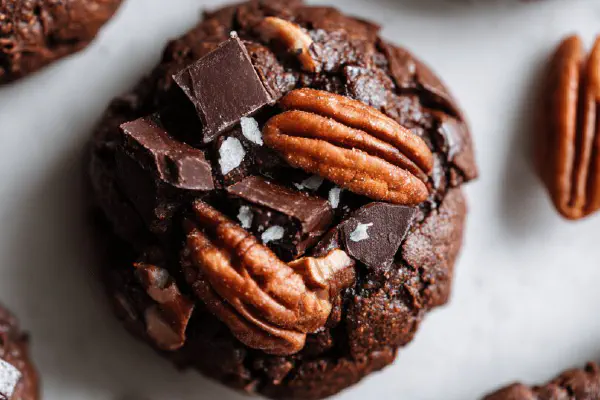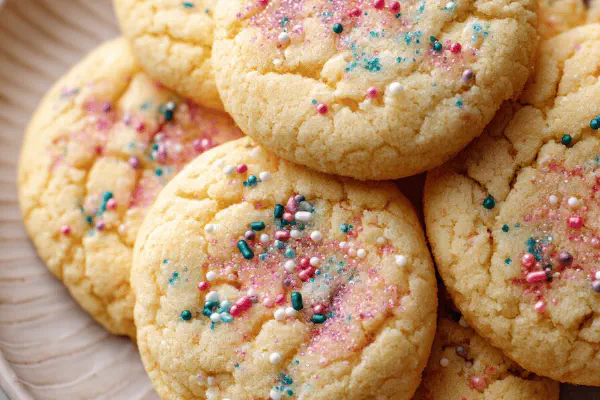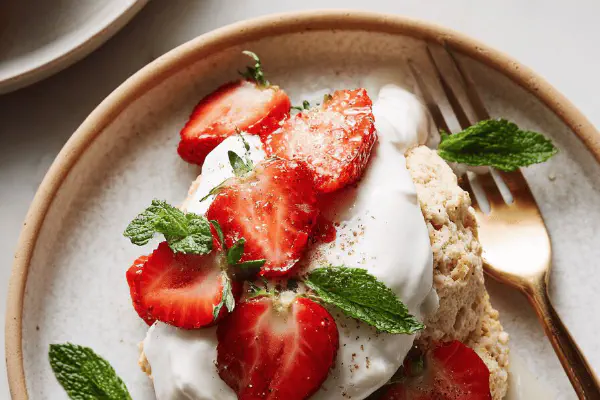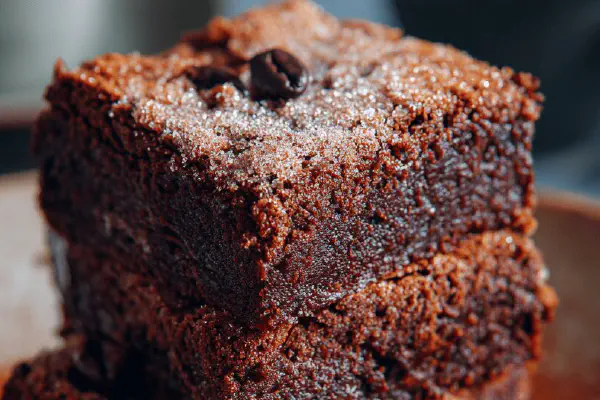Apple Crumble Squares
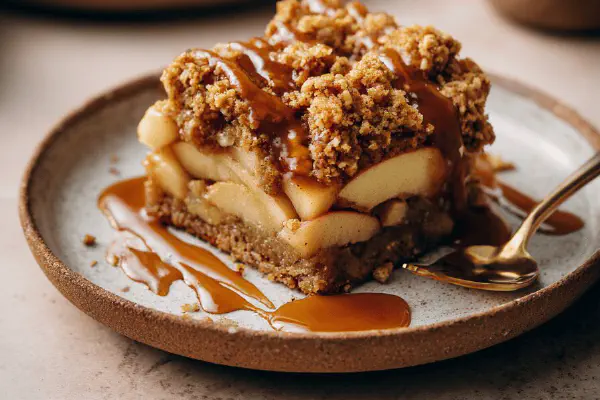
By Emma
Certified Culinary Professional
Ingredients
Crust
- 110 g softened unsalted butter (about 1/2 cup)
- 100 g packed light brown sugar (just under 1/2 cup)
- 215 g all-purpose flour (about 1 1/2 cups)
Topping
- 55 g quick oats (1/2 cup)
- 30 g unsalted butter softened (2 tbsp)
- 50 g light brown sugar packed (1/4 cup minus 1 tbsp)
- 25 ml arrowroot powder (2 tbsp)
- 1 ml ground cinnamon (1/4 tsp)
- 500 g Spartan apples peeled, halved, cored and sliced thinly
About the ingredients
Method
Crust
- 1. Center oven rack. Heat to 175° C (345° F). Grease 20 cm square pan. Line with parchment leaving overhang on two edges. No stick means easy out.
- 2. Blend butter and sugar until creamy but still slightly gritty, not melted. Add flour; mix to crumbly clumps. Reserve about 120 ml (1/2 cup) for topping. Press remaining dough firmly into base; sets foundation. Bake 9-11 minutes, edges turning pale gold, center faintly puffed; too long means dry, too short, soggy base.
Topping
- 3. Mix reserved crumb with oats and butter by hand until clusters form. Coating oats in butter stops drying out, keeps texture chewy.
- 4. In big bowl, toss sugar with arrowroot and cinnamon before adding apples. Powder clings to fruit, thickening juices as they cook. No arrowroot? Cornstarch works but arrowroot adds gentle sheen.
- 5. Lay apples evenly atop baked crust. Scatter oat mixture loosely—don’t pack. Piling kills crisp patches.
- 6. Bake 43-48 minutes. Watch oat topping color: light amber with crunchy edges signals done. Apples should bubble gently, juices thick and glossy. Pull pan then; residual heat finishes job.
- 7. Cool on wire rack. When lukewarm, lift by parchment, place on board. Cut into 9 squares while still warm for clean slices; chilling firms bars but dulls aromas.
Cooking tips
Chef's notes
- 💡 Cream butter and sugar until grainy but not melted. Overbeating warms butter and makes dough oily. Use paddle or spatula; mechanical beaters can ruin texture. Chilled oven helps crust set fast—short bake stops soggy base. Reserve crumb for topping early—pressing all dough loses cluster effect, ends chewy bits. Baking crisp crust is timing dance; visual cues win over clock. Pale gold edges, faint puffing center.
- 💡 Keep oats quick-cooking for chew not sandpaper. Rolled oats dry out batter and kill moisture balance. Butter coats oats by hand or with pastry cutter to keep lumps intact. Small clusters absorb juices yet stay crisp after bake. Mix sugar, arrowroot, cinnamon dry first—clings to apple surface like glue, thickens juice quietly while baking. Cornstarch alternative okay but arrowroot yields silkier coating, no grit.
- 💡 Peeling apples removes tough skin that resists heat and creates dry patches. Slice thin; equal thickness avoids hotspots, uneven softening. Use Spartan apples for balance: hold shape, moderate sweetness, fibrous enough for texture. Softer apples risk mushy layers. Scatter topping loosely—packing kills crunch, locks steam beneath. Watch oat color turn light amber, edges crisp and aromatic. Bubble signals juices reduced, filling ready.
- 💡 Avoid pressing topping hard. Pressure kills crumb clusters and bakes dense crust on top—no crunch. Bake topping long enough but watch: too dark means dry. Pull pan when you see bubbling juices but before fruit breaks down completely. Residual heat finishes set. Cooling on rack necessary to firm bars but warm slice easier, cleaner cuts. Parchment overhang is a cheat for easy lift; no scraping, no wrecking edges.
- 💡 Substitutions: margarine dulls flavor, butter preference important. Gluten-free flour needs xanthan gum for structure; expect denser base. Arrowroot preferred over corn starch; dissolve cold first; corn starch causes cloudiness and grit. Timing varies with ovens; monitor bubbling juices and oat color not just clock. Crust thickness affects bake times; thin crust sizzles dry too fast, thick base delays soft center. Keep notes per oven and tweak temperature up or down.
Common questions
What if crust ends soggy?
Usually underbaked first bake. Oven hot enough? Rack centered for even air? Dough too wet or pressed too soft. Reserve crumb well. Bake crust longer, watch edges. Thin crust faster dry. Adjust bake temp down if browns too fast but dries.
Can I use other apples?
Yes but pick firmer types that hold shape. Softer apples like McIntosh disintegrate, turn mushy, mess layering. Peel thin for even bake. Tartness level adjusts sweet balance; more sugar might be needed with tart apples. Mixed apple blends change texture, burst more juice.
Why no eggs or dairy in topping?
Avoids sogginess and makes crunch focused. Butter needed for richness but no eggs means no binding or drying too fast. Makes dessert accessible for restricted diets. Dairy-free butter substitutes possible but expect flavor loss and less golden color.
Best way to store leftover bars?
Room temp with plastic wrap or airtight container—lasts 2-3 days. For longer, refrigerate tightly covered but cold dulls aromas, firms bars. Reheat warm to regain bite. Avoid freezing unless tightly wrapped; texture changes after thaw.
